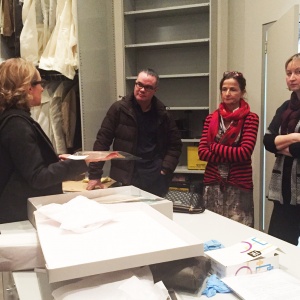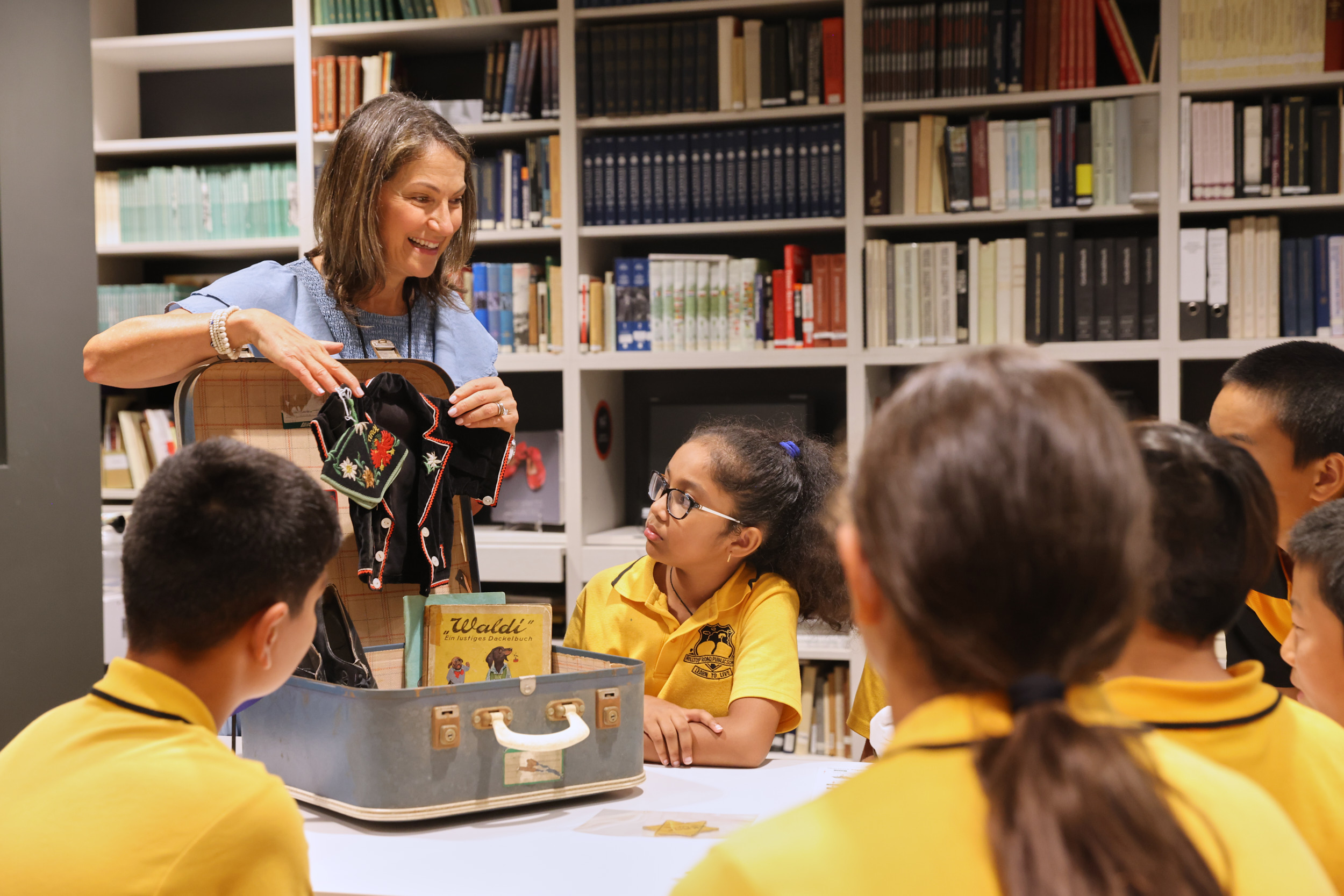Blog
July 28, 2016
Decoding ‘Digital’
Digital.
A word that is likely to strike fear into the hearts of purists and luddites the world over.
An appreciation of digital media does not have to be relegated to the world of the moustachioed, cardigan clad hipsters complete with their liberal arts degrees and single-speed bikes. Quite the opposite. It should be embraced as a democratising force. One which is finally enabling Museums to build more porous boundaries between ‘the exhibition’ and the rest of the world.
So says Seb Chan, the digital wunderkind who has been taking the Museum sector by storm. We were lucky enough to have Seb in our midst yesterday, sharing his unparalleled enthusiasm for all things cookie, code and click related.
Seb (if you didn’t know) is the bunned and bespectacled Aussie responsible for the overhaul of Manhattan’s Cooper Hewitt Smithsonian Design Museum in 2014.

Seb Chan exploring the Museum archives.
With limited resources and the eyes and expectations of America’s design impresarios upon him, Seb took an everyday object (a pen) and transformed it into a map, compass and canvass for museum visitors.
With the Cooper Hewitt pen in hand, visitors can now tap the wall description near objects, and store high-resolution photographs and exhibit information to be accessed at home following the visit.

The ‘Pen’
In the Museum’s ‘immersion room’ visitors were encouraged to design their own wallpaper, scribbling shapes and design onto a digital board and watching as their masterpieces were projected and repeated on the four walls around them – leaving their own finite mark on the small historic space.
With a few short strokes, Chan infused an age old institution with a sense of play and interactivity, rebooting the Museum for the era of constant connectedness.
So how does this relate to a Holocaust and Jewish History Museum in Sydney’s eclectic centre?
Below are just a few nuggets gleaned from yesterday’s session:
- The potential for exploring the Museum collections are infinite. No longer will the story of an object be dictated by an expert in a 180 word label. ‘Living Software’ will allow curators to tell the story of the object in entirely new ways – guiding the visitor toward new and unknown connections (including searches that link objects by geography, colour or contemporary significance.)
- It is unrealistic to think that a single visit to the museum will give people a lifetime of knowledge about the Holocaust and Jewish history. The most we can hope, is to ignite a spark of interest that inspires a journey of discovery – and digital technology can be a useful method of prolonging and deepening this engagement.
- People process information differently in communal and solitary settings. The physical experience of the museum must be communal and effecting, offering opportunities for the individual to learn, debate and create.
It is impossible to answer all of the questions that the new digital age brings with it. One thing, however, is certain: In this time of economic, social, political and environmental upheaval, we need our museums more than ever. They need to be able to reach us, speak to us and empower us long after we leave their four walls.
The future depends on it.
Author: Natalia Thomas, Marketing Manager.


What’s On Newsletter
Keep up to date on all Museum events and exhibitions.